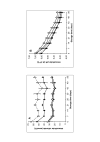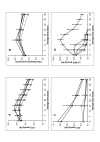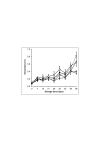Prevention of red cell storage lesion: a comparison of five different additive solutions
- PMID: 28488968
- PMCID: PMC5589708
- DOI: 10.2450/2017.0371-16
Prevention of red cell storage lesion: a comparison of five different additive solutions
Abstract
Background: In Europe, red cell concentrates (RCC) are usually stored in SAGM (saline-adenine-glucose-mannitol). During storage, in vitro red cell quality declines, including lowered energy status and increased cell lysis. Recently, several additive solutions (ASs), designed to diminish the decline in in vitro quality during storage, have been developed. These new solutions have mainly been developed to better maintain red blood cell (RBC) 2,3-biphosphoglycerate (2,3 BPG) levels and energy status during storage. High levels of 2,3 BPG allow for better oxygen release while high energy status is necessary for function and survival of RBC in vivo. In a paired study design, RBC ASs were compared for their ability to provide improved in vitro quality during hypothermic storage.
Materials and methods: For each experiment, 5 whole blood units held overnight were pooled and split. The whole blood units were processed according to the buffy coat method. RBCs were resuspended in either SAGM, PAGGSM, PAG3M, E-Sol 5 or AS-7 and leucoreduced by filtration. RCCs were stored for eight weeks at 2-6 °C and sampled weekly for analysis of in vitro quality parameters.
Results: Red cell concentrates stored in PAG3M, E-Sol 5 and AS-7 showed significantly higher lactate production and higher levels of intracellular adenosine triphosphate (ATP) and total adenylate. 2,3 BPG levels rapidly declined during storage in SAGM and PAGGSM. The decline in 2,3 BPG was inhibited during storage in E-Sol 5 and AS-7, while in PAG3M, 2,3 BPG level increased above the initial level till day 35 and remained detectable till day 56. Haemolysis was comparable for all ASs until day 35, upon prolonged storage, haemolysis in SAGM was higher than with the other ASs. As compared to SAGM, storage in PAGGSM, PAG3M, E-Sol 5 and AS-7 better maintained morphological properties.
Discussion: Storage of RBCs in the new generation ASs yield RBCs with more stable metabolite levels and improved overall quality during storage as compared with RBCs stored in SAGM.
Conflict of interest statement
The Authors declare no conflicts of interest.
Figures



Similar articles
-
Red cell storage in E-Sol 5 and Adsol additive solutions: paired comparison using mixed and non-mixed study designs.Vox Sang. 2014 May;106(4):322-9. doi: 10.1111/vox.12108. Epub 2013 Oct 25. Vox Sang. 2014. PMID: 24164372
-
An improved red blood cell additive solution maintains 2,3-diphosphoglycerate and adenosine triphosphate levels by an enhancing effect on phosphofructokinase activity during cold storage.Transfusion. 2010 Nov;50(11):2386-92. doi: 10.1111/j.1537-2995.2010.02700.x. Transfusion. 2010. PMID: 20500561
-
The effect of prefreeze rejuvenation on postthaw storage of red blood cells in AS-3 and SAGM.Transfusion. 2017 Jun;57(6):1448-1458. doi: 10.1111/trf.14093. Epub 2017 Mar 28. Transfusion. 2017. PMID: 28369966
-
Impact of Different Red Blood Cell Storage Solutions and Conditions on Cell Function and Viability: A Systematic Review.Biomolecules. 2024 Jul 8;14(7):813. doi: 10.3390/biom14070813. Biomolecules. 2024. PMID: 39062526 Free PMC article.
-
Storage of red blood cells: new approaches.Transfus Med Rev. 2002 Oct;16(4):283-95. doi: 10.1053/tmrv.2002.35212. Transfus Med Rev. 2002. PMID: 12415514 Review.
Cited by
-
Metabolic effect of alkaline additives and guanosine/gluconate in storage solutions for red blood cells.Transfusion. 2018 Aug;58(8):1992-2002. doi: 10.1111/trf.14620. Epub 2018 Apr 6. Transfusion. 2018. PMID: 29624679 Free PMC article.
-
Assessing quality of blood components derived from whole blood treated with riboflavin and ultraviolet light and separated with a fully automated device.Blood Transfus. 2022 Sep;20(5):395-403. doi: 10.2450/2022.0278-21. Epub 2022 Feb 1. Blood Transfus. 2022. PMID: 35175188 Free PMC article.
-
Comparing two extracellular additives to facilitate extended storage of red blood cells in a supercooled state.Front Physiol. 2023 Jun 1;14:1165330. doi: 10.3389/fphys.2023.1165330. eCollection 2023. Front Physiol. 2023. PMID: 37324383 Free PMC article.
-
Large Animal Models for Simulating Physiology of Transfusion of Red Cell Concentrates-A Scoping Review of The Literature.Medicina (Kaunas). 2022 Nov 27;58(12):1735. doi: 10.3390/medicina58121735. Medicina (Kaunas). 2022. PMID: 36556937 Free PMC article.
-
A deep 96-well plate RBC storage platform for high-throughput screening of novel storage solutions.Front Physiol. 2022 Oct 4;13:1004936. doi: 10.3389/fphys.2022.1004936. eCollection 2022. Front Physiol. 2022. PMID: 36277188 Free PMC article.
References
-
- Burger P, Korsten H, de Korte, et al. An improved red blood cell additive solution maintains 2,3-diphosphoglycerate and adenosine triphosphate levels by an enhancing effect on phosphofructokinase activity during cold storage. Transfusion. 2010;50:2386–92. - PubMed
-
- Gevi F, D’Alessandro A, Rinalducci S, Zolla L. Alterations of red blood cell metabolome during cold liquid storage of erythrocyte concentrates in CPD-SAGM. J Proteomics. 2012;76:168–80. - PubMed
-
- Bordbar A, Johansson PI, Paglia G, et al. Identified metabolic signature for assessing red blood cell unit quality is associated with endothelial damage markers and clinical outcomes. Transfusion. 2016;56:852–62. - PubMed
-
- Verhoeven AJ, Hilarius PM, Dekkers DW, et al. Prolonged storage of red blood cells affects aminophospholipid translocase activity. Vox Sang. 2006;91:244–51. - PubMed
-
- Hogman CF, de Verdier CH, Ericson A, et al. Studies on the mechanism of human red cell loss of viability during storage at +4 degrees C in vitro. I. Cell shape and total adenylate concentration as determinant factors for posttransfusion survival. Vox Sang. 1985;48:257–68. - PubMed
MeSH terms
Substances
LinkOut - more resources
Full Text Sources
Other Literature Sources
Research Materials
Miscellaneous
